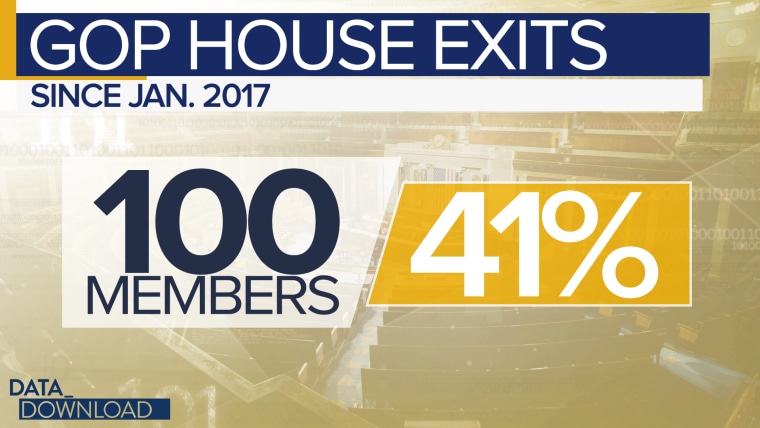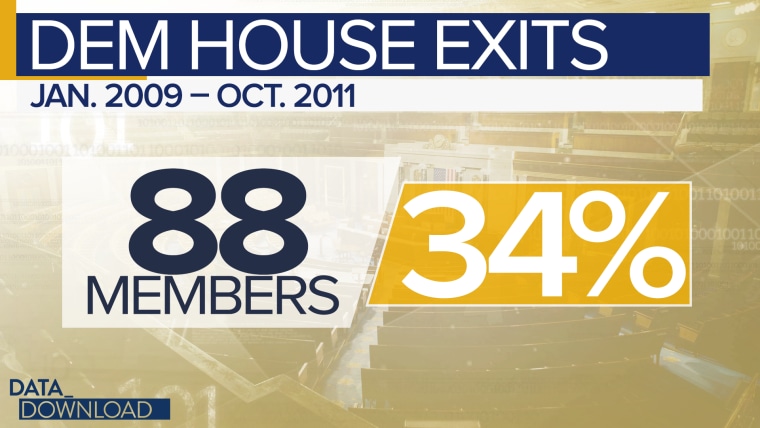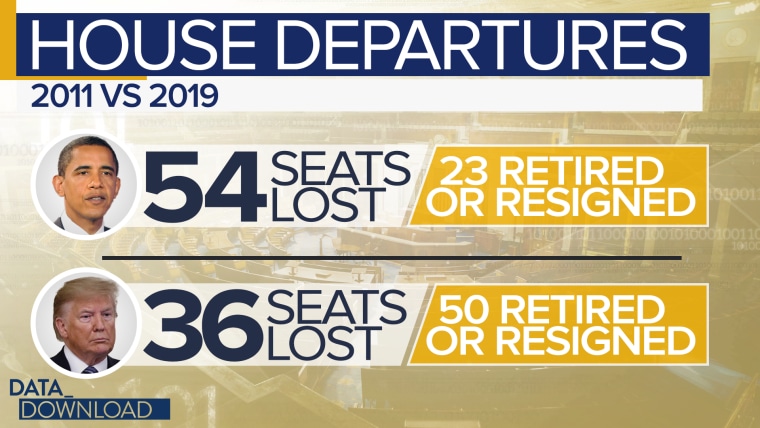WASHINGTON — Change is a way of life in Washington. Politicians come and go at the whims of voters. But even by D.C. standards, House Republicans have seen massive changes during President Donald Trump's administration. This week, as the House impeachment proceedings become public, those changes are going to be front and center.
When Trump arrived in the White House in 2017, there were 241 Republicans at the other end of Pennsylvania Avenue in the House of Representatives. Today, 100 of them have gone or have announced that they are leaving. That's 41 percent of that original 241 in the 115th House.

To be clear, that's not congressional seats lost; that's a measure of actual people, the personalities that once roamed the halls of Congress that aren't there anymore. They left for a range of reasons. Some left to take administration appointments, some lost, and some just walked away.
While much is made of partisan flips — and they are obviously crucial in terms of who controls the House and the Senate — Congress is ultimately a collection of people, and personalities matter. Personalities frame debates and set up how committees are run. And the House's GOP personalities will define the larger Republican Party when impeachment moves from private to public hearings this week.
The change in the House GOP over the last three years has been especially striking. Compare it to changes in the Democratic House in the same time period under President Barack Obama from January 2009 to November 2011.

By this time in Obama's first term, he had seen 88 Democratic House members leave or announce that they were leaving. That was about 34 percent of the 256 House Democrats in office when Obama was inaugurated.
That's not a trivial number, but it's smaller than the current Republican departure figure. And remember that Obama and Democrats suffered a massive defeat in the House in 2010, when the party lost 63 seats, the largest loss of seats in a midterm by a party in the House since World War II.
There are also some key differences in how the Trump and Obama House changes happened, the biggest one being the driving force behind the exits.

In the case of the Obama House, the majority of Democratic departures, 54 of them, came via the ballot box. Most were voted out in the Republican tsunami of 2010, which swept the GOP into power and dramatically altered the rest of Obama's time in office — al though some lost in primaries. Another 23 left of their own accord, through retirements or resignations.
For the Trump House, the election-to-retirement ratios are flipped.
A good number of changes in the Republican House, 36 of them, came through election defeats. But overall, the departures are being driven more heavily by retirements and resignations. Half the Republican House turnover has come via voluntary exit — 50 departures. And there was a lot of experience on that list.
Former House Speaker Paul Ryan, a 10-term veteran, bowed out on his own. And 10 other Republican members who had served at least four terms in the House retired with their seats remaining Republican. That is, they were not in real danger of losing — they just walked away and let different people take the reins.
And more departures are likely on the way. We are heading into the holidays and the new year, always a prime time for members to announce that they are not seeking reelection.
Keep these changes in mind this week when the House impeachment trial becomes a public affair. There has been a lot of turnover in the House in the past few years, and not just in terms of partisanship. The president's own party in the chamber looks very different from when he arrived in Washington.
The House Republicans have less institutional memory and more new faces than they did a few years ago — and those new faces have come to Congress in Trump's Washington. That's likely to have some impact when temperatures and rhetoric rise around impeachment.